The International Solid Waste Association’s working group on recycling and waste minimisation met in person for the first time in more than two years in Mechelen, Flanders at the office at the headquarters of the regional waste organisation, OVAM just after Easter 2022. However, in common with other meetings this meeting was hybrid with people zooming in from all over the world. On the second day there was a study tour arranged through our co-hosts, VITO, a research organisation based in Antwerp and which undertakes work for the European Environment Agency. Three treatment plants for Flanders’ post-consumer wastes were visited during the working group’s study tour, each dealing with different waste streams in order to maximise their recovery and recycling.
Indaver
Indaver is a Dutch based company founded in 1985 with subsidiaries in a number of countries: Belgium, Germany, Eire and in the UK the Rivenhall EfW plant, for example, is being built by Indaver. In Willebroek, Belgium the Indaver Milieupark plant was built on the site of an existing older plant to deal with packaging wastes generated by households and particularly to handle the 2019 changes to the Fost Plus system with expansion of the types of waste consumers could discard into their blue bags to encompass plastic film material. This is one of five plants that have been established in Belgium recently and is the largest to date, although the new plant being built in Ghent is of a similar capacity and there are three smaller plants in Wallonia, the French speaking part of Belgium.
In 2019 Fost Plus changed its collection system to allow more plastic items to be placed in consumers’ PMD blue bags, including a wider range of plastic containers rather than just plastic bottles. This change also permitted plastic films to be separated by consumers but no polystyrene or non-packaging plastic items or plastic containers that have had non-food items in them.
In contrast to the UK, in most continental countries there is a wider range of products that are packed in drinks containers.
PMD is managed through providing consumers with blue plastic bags into which they can place PMD items: plastics, metal and drinks containers (Tetrapak and Elopak being the main products). In contrast to the UK, in most continental countries there is a wider range of products that are packed in drinks containers. Consumers are requested to flatten plastic containers lengthwise and replace the cap to save space in the bags; it also has an advantage when it comes to the sorting plant’s near infra-red sorters operation. Glass still goes to bottle banks but consumers are requested to place the caps and lids in their PMD bags.
The Willebroek plant was built with a 90,000 tpa capacity working with three shifts but has to date has operated only with two shifts: 07.30-14.00 and 14.30-20.00, with cleaning and maintenance programmed for the night. However, as it started operating at the beginning of the pandemic the staff had to cope with a greater than expected amount of household packaging waste as everybody who could was working from home.
The staff had to cope with a greater than expected amount of household packaging waste as everybody who could was working from home
The reception hall was full to the roof and material overflowed into the surrounding open yard area. In normal times there are two smaller audit storage areas either side of the reception hall entrance which are used to measure a week’s worth of two inter-communal waste areas, where 8 hours’ worth of their waste is subjected to the normal sorting processes but the results are carefully logged to be fed back to Fost Plus. If there is a greater than acceptable amount of contamination the waste authority and municipalities are informed in order to generate local communication and promotional programmes in order to get their citizens back on the correct recycling track.
Fost Plus
The contract is between Fost Plus and Indaver and lasts for 9 years with Fost Plus taking ownership of the final products for onward sale to processors and an agreed specification for the end products as determined with negotiations with the reprocessors, and an agreed amount of residue from the plant. The average non-useable material delivered is around 15% of the total and this includes a wide range of potential contaminants and unusable materials.
The material is delivered to the plant in bulk vehicles and from the floor is loaded into a hopper by front end loaders from where it is conveyed to a bag-splitter, rated at 20-22 tonnes per hour, and the contents then transferred to three large rotating trommel screens to sort the main materials with the largest items of plastic film coming through to the end and conveyors taking each of the product streams for onward automatic sorting through conveyors equipped with magnetic and eddy current separators and the plastics sorted according to chemical analysis by near infra-red scanners, 22 of which are in the plant and all supplied by Tomra.
The hand sorting operations are confined to the final stages of the system to ensure that the 14 products coming from the plant are up to specification
In consequence the hand sorting operations are confined to the final stages of the system to ensure that the 14 products coming from the plant are up to specification. The manual sorters are all long-term employees of the plant, having moved onto this more sophisticated sorting from the earlier cruder hand sorting of the older plant. Each is required to put material which has been mis-sorted but could be recycled into a recovery chute to go back through for processing again, and also to take out items that are unacceptable into a residue chute. In all there is 135 staff operating the plant. Renewable energy is generated by 1600 solar panels on the roof of the processing plant and a single wind generator located at the centre of the site.
Sheltered workshop
‘t Veer(which is the correct spelling) was founded in 1984 and operates a sheltered workshop in Menen, south west Flanders which acts as a WEEE processing facility which, in contrast to Indaver, relies on hand sorting and dismantling of small WEEE items. The operative staff have some form of disability but all find the work at ‘t Veer fulfilling, often travelling for two hours by bus and train to get to their work. Just as the Indaver staff prefer to stay with one assigned sorting task so the ‘t Veer staff like to stay with one type of work rather than move around.
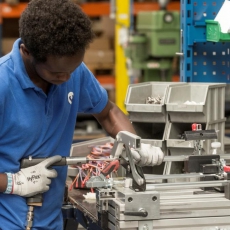
The Menen site houses three buildings, each predominantly devoted to one type of activity but there is some flexibility given the erratic flow of WEEE into the plant, which specialises in small household items, screens and IT equipment. The day we visited was interesting in that instead of a plethora of items normally generated by households around Easter there was very little, especially TVs, perhaps an early indicator of the pressure on household budgets with inflation soaring globally?
One building takes in all the small household items, of which an estimated 50% were still capable of working. Each item is taken out of its HWRC delivery cage individually in order assess and initially process them by removing any easily accessible batteries and then any wood from items and separating the main component materials where easily possible. Items where the batteries are not separated are set to one side, either to be processed by hand on site, and while we were there this was happening in the IT equipment building or batteries are sent elsewhere, as may be the fate of the thousands of small lights from aircraft lifejackets we saw in a bulk container at the plant. Also all condensers are also removed from equipment as the oldest of these components may contain PCBs.
The second building processes TVs and all other items with a larger screen, predominantly flat screens rather than those with a CRT, to take out all the batteries and the printed circuit boards that are at the back of flat screen TVs so there are large numbers of screws to undo. The screens themselves are then sent elsewhere for further processing.
The third building handles the IT equipment, where again the batteries have to be removed and there are 6 types of battery that are then passed onto BATREC for them to arrange processing. Much of the further processing of the depolluted items from throughout the site is undertaken close by through Galloo.
Galloo
Galloo was originally a scrap metal processing company founded in the 1920s but now has a multitude of products and materials that they process and have also diversified into the reprocessing of four types of plastic as well. The plant we visited was Galloo’s main facility, which intriguingly straddles the border between France and Belgium, thanks to a river straightening engineering operation more than 20 years ago which meant that 20 ha. of French territory became detached and immediately adjacent to Belgium so it was purchased by Galloo to expand their existing Menen site. So the site now has two environmental regulators and the staff work either under French employment law with a 35 hour working week or Belgian law with a 38 hour working week and often different national holidays as well that have to be coped with operationally.
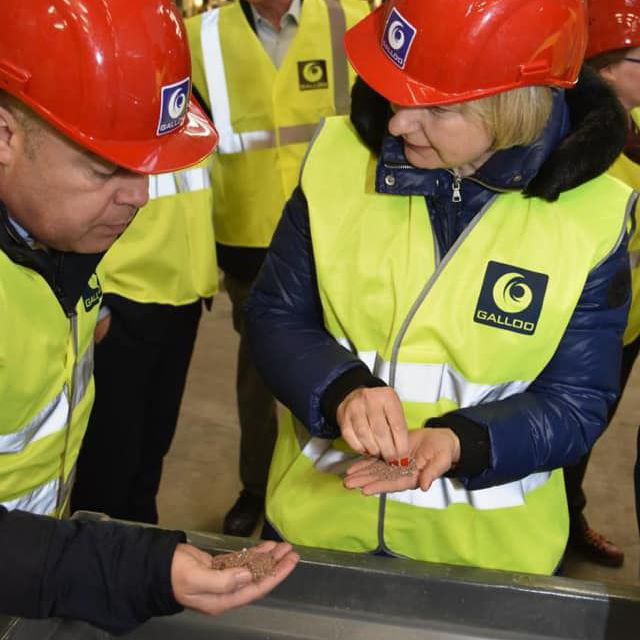
Galloo had a turnover of €700 million in 2021, its best year ever, from processing a million tonnes of steel scrap, 60,000 tonnes of non-ferrous metals and almost the same amount of plastics. Galloo employs 700 staff in 28 sites in northern France, 3 in Flanders and 2 in the Netherlands. The Menen site has its R&D facility together with its widest range of operations that include two shredders of 2,000 and 3,000 HP capacity, a 1200 tonne shear and a car flattener. In addition the site processes the metal and plastics containing WEEE from‘t Veer, all French solar panels, washing machines and other large household white goods except for fridges and freezers which are depolluted and processed elsewhere. However, even the washing machines require the condensers taking out before shredding. In addition, the site provides final processing for shredder residues for a wide range of other companies and from different countries in the EU.
ELV processing
The site also processes ELVs, mainly from France, with some vehicles being stripped for spare parts, mainly exported to African countries, with specific parts for specified models being requested and those vehicles then being put through a disassembly procedure to remove appropriate parts. Other ELVs are depolluted and then flattened before shredding. Around 8-10% of the weight of vehicles handled is salvaged as spare parts. The tyres that are removed are sent elsewhere for further treatment.
The main shredder materials are ferrous and non-ferrous metals and the light fraction is processed by heavy media flotation on site to generate 4 plastic streams that can be reprocessed on an adjacent site, a PVC stream for landfilling and the remainder, which due to its high calorific value can be used as rdf. Foams and rubber plus some plastics are therefore produced as rdf for the cement industry which can be blown into cement kilns as a replacement for fossil fuels. Some of the rdf is exported, including to Stockholm. The glass from the shredding process ends up as a sand for use as a fill material.
Some of the materials are brought in or exported by river transport from Galloo’s jetties, thereby providing a low impact transport option for its operations, given that many customers have their own canal, river or marine transport facilities





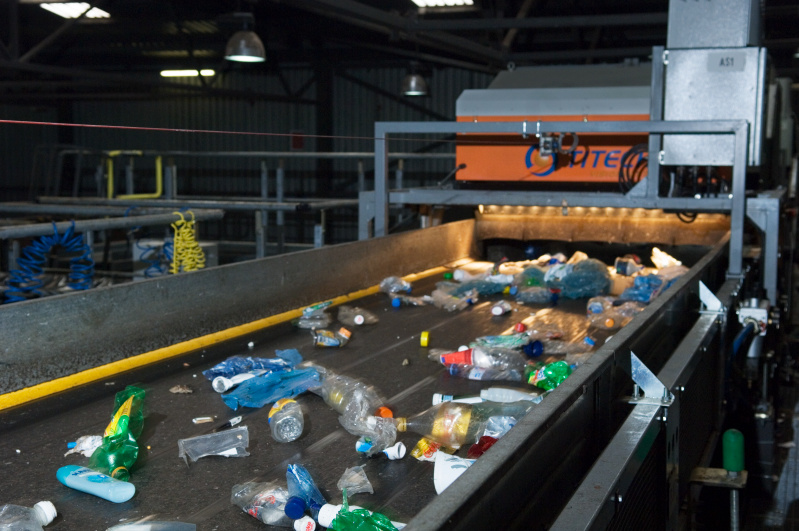

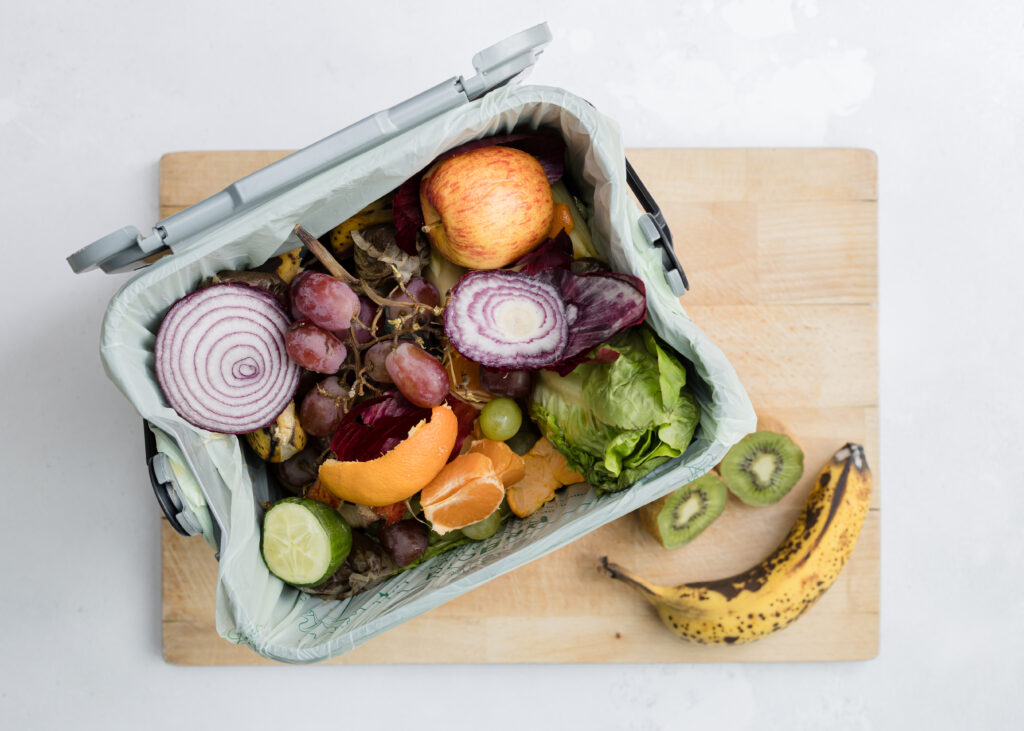

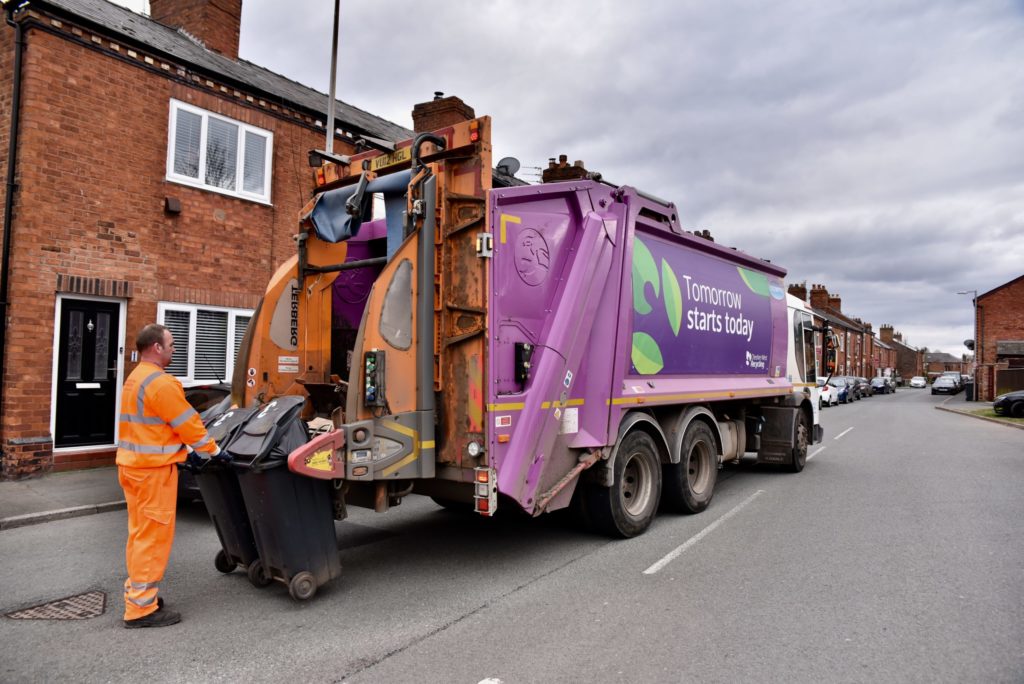


Subscribe for free